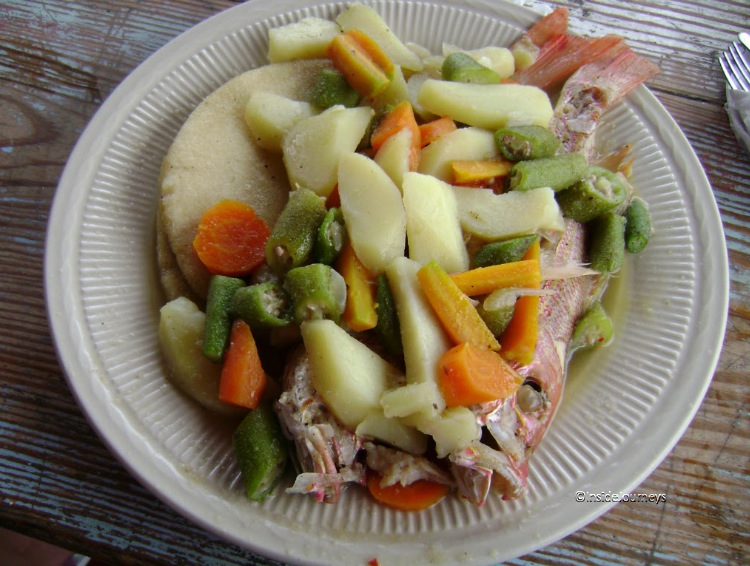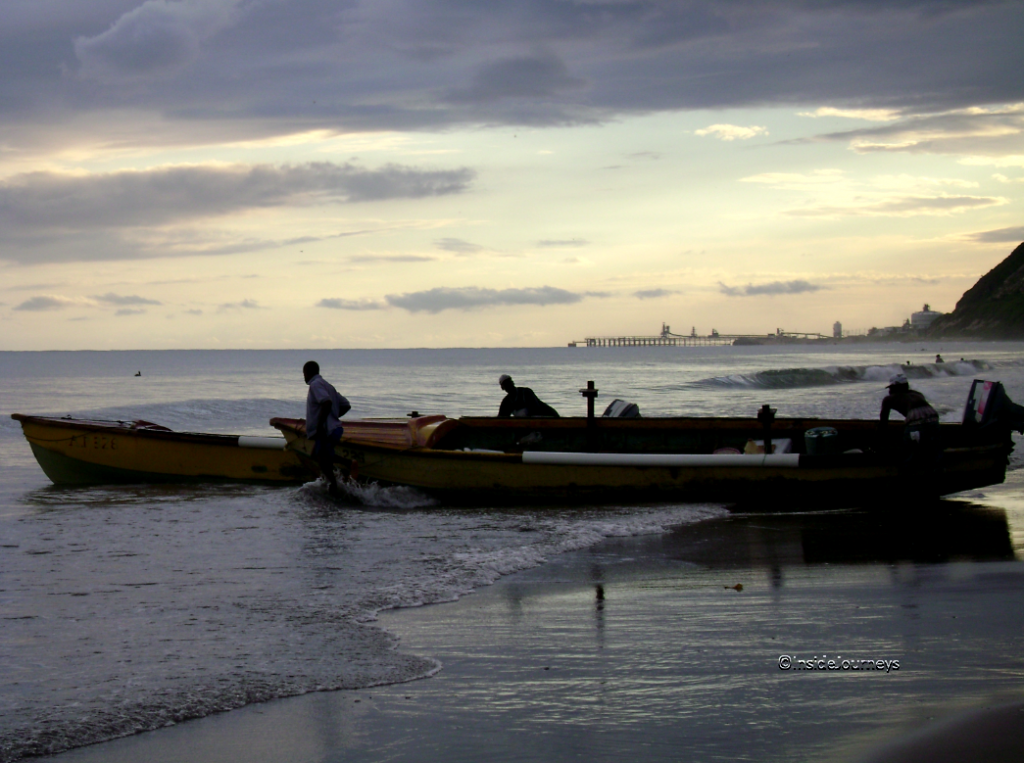My cousin and her husband kept raving about this place he said they knew I would love. But they wouldn’t say what it was or why they were so sure I’d love it.
I was curious.
We loaded up the car and headed north east from Montego Bay towards Trelawny. Once at the sign to the Outameni Experience, we turned off the road.

So this is where we were going!

Outameni, the Jamaican lingo for Out of Many (as in Out of Many, One People – the Jamaican motto) is an interactive look back at Jamaica’s history from the time of the indigenous people, the Arawak or Taino, as they’re now called, through the present.



Our entertained us with mento dancing and storytelling while we waited for the tour to begin.

Each period is represented by its own display with guides in period dress narrating the story of that time.

The Taino arrived in Jamaica around 650 A.D. from South America. They were said to be peaceful people who planted cassava, corn, sweet potato and got most of their food from the sea. When Columbus arrived in 1492, it was the Taino who greeted him. Unfortunately, within a few years of his arrival, the Tainos in Jamaca were exterminated. It is said that some killed themselves rather than be put to work by the Spanish, others died after coming into contact with European diseases for which they had no immunity.

Christopher Columbus and his merry band of sailors stumbled upon Jamaica on May 5, 1494 on his second voyage on behalf of the King of Spain. Thus began the period of Spanish settlements in Jamaica which lasted until the British took over in 1655.

The first Africans in Jamaica came as servants of Spanish settlers. These were freed when the British took over Jamaica in 1655. As sugar production exploded, Africans were again brought to the island, this time to work on the plantations.



Nearly 40,000 Indians were brought to Jamaica beginning in 1845 as indentured workers to work in the sugar cane industry after slavery was abolished. Many were repatriated but far many remained. Today, their descendants make up the second largest racial group in Jamaica.

The Chinese began coming to Jamaica in the 1845 to work on sugar cane plantations. Today, they make up the majority of the merchant class.

The Outameni Experience ends with Jamaica today, a vibrant country that approximately 2 million people – African, Indian, Chinese, Jewish, Lebanese, Scottish, German, Cuban, Haitian, American, Canadian and Latin American – call home.

If you like what you see why not Share, Tweet, Digg, Like etc. You never know who you might be helping to make a difference.
Related Articles
- Taino Symbology Review (carolefdee.wordpress.com)








































